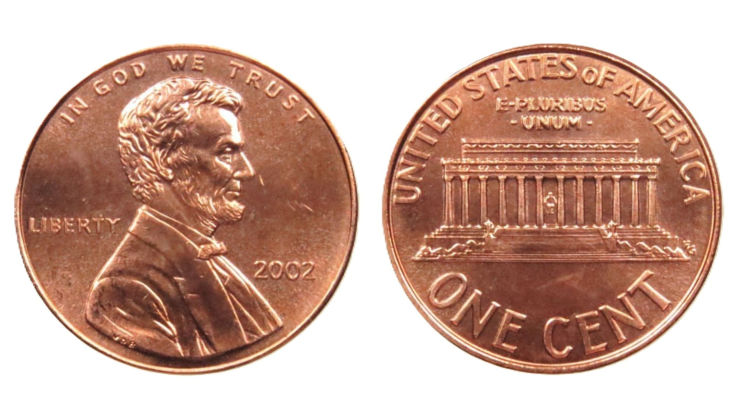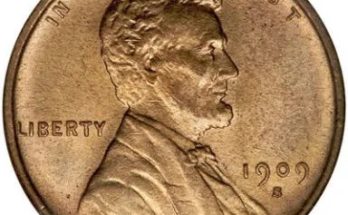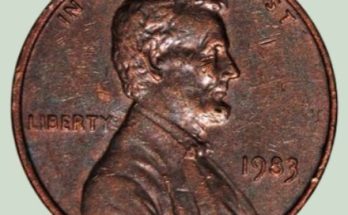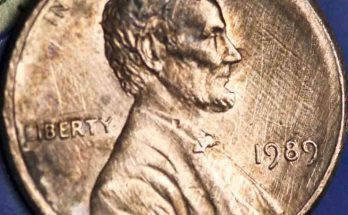Are you looking to collect Lincoln pennies worth money? Our 2002 penny errors list is the ultimate guide to building a Lincoln pennies collection worth a fortune!
Generally, Lincoln pennies are only worth their face value. With the United States Mint having started production as early as 1909, the Lincoln penny is one of the longest-running modern coins series.
Most years, including in 2002, the Mint produced billions of pennies, making these coins extremely common. This also means Lincoln pennies are only worth their face value in circulated condition. Even uncirculated pennies are common and affordable, particularly those graded MS67 and lower. Lincoln pennies graded MS68 are somewhat scarce but are still available and only those graded MS69 are often worth a fortune due to their rarity.
So, are Lincoln pennies worth collecting? Yes! If you know what to look for, you can build a high-value Lincoln pennies set. One way to do this is to collect error coins. As our list of 2002 penny errors will reveal, errors can be worth hundreds and even thousands depending on the type of error and, of course, the coin’s condition.
Are you ready to discover 2002 penny errors worth adding to your collection? Let’s jump in and get started with our list of 2002 Lincoln pennies worth money!
1. 2002-D MS65 Lincoln Penny Die Cap Error
One of the most interesting error coins you might come across when collecting 2002 pennies is the die cap. As the name suggests, this is an error in which the coin is shaped like a cap with raised rims and a hollow center.
A die cap error occurs when a planchet sticks to the die during striking, eventually taking the die’s shape. The stuck planchet, which essentially becomes the new die face creates a distorted image when it strikes the incoming planchets.
So, on the obverse, the incoming planchets will have a weak reverse strike from the die cap and a stronger reverse strike from the reverse die. This is known as a brokage error.
Unsurprisingly, collectors love collecting die cap error coins due to their dramatic visual appeal and rarity. They’ll also pay big money to acquire such an error—for example, in 2007, a collector at a Stacks Bowers auction paid an impressive $1,450 for a 2002-D penny graded MS65 with a die cap error.
2. 2002-P MS67 Lincoln Penny With 35% Off-Center Strike
Another error that comes up when collecting 2002 Lincoln pennies is the off-center strike. This error happens when the planchet is mispositioned inside the coining chamber, causing the die to strike away from the planchet’s center and more toward the edge. An off-center strike occurs mostly due to a misalignment between the die and planchet.
The value of an off-center strike error largely depends on the percentage of the off-strike—the greater the percentage, the more valuable the error tends to be. For example, a 30% off-strike will generally be more valuable than one with a 5% off-center strike.
In 2015, Heritage Auction sold a 2002-P Lincoln penny graded MS67 with a 35% off-center strike error for an eye-watering $1,280.
3. 2002-S MS66 Lincoln Penny Double Die Reverse (DDR)
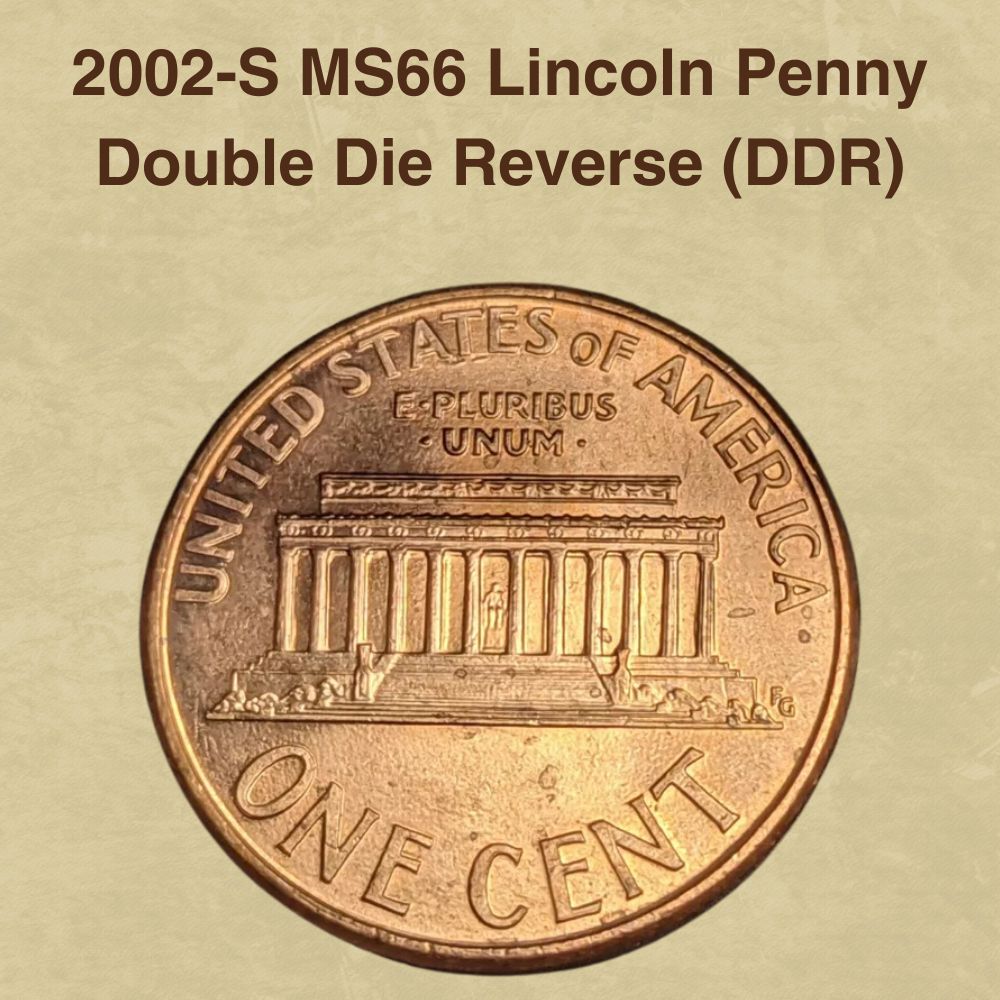
One of the most common errors in the 2002 penny series is the doubled die—you can easily add this valuable error to your collection.
A double die (DDR) error occurs during the die-making process when a misalignment results in the design being engraved on the die surface two or more times, each time at a slightly different angle. This can happen on the obverse or reverse, or both dies at the same time, giving the design on the coin an interesting mirrored or doubling effect.
For example, on some 2002 Lincoln pennies you might notice doubling on inscriptions, especially on the words “E PLURIBUS UNUM” and on the Lincoln Memorial columns.
So, how much can you expect from a Lincoln penny with a doubled die error? Well, in 2019, a collector at a GreatCollections sale paid a jaw-dropping $1,200 for a 2002-S penny graded MS66 with a doubled die reverse error, making this an excellent addition to your collection.
4. 2002-P MS69 Lincoln Penny Broadstrike Error
A broad-strike or broad-struck is another interesting error you might encounter when collecting 2002 pennies. This error results from a planchet being struck outside the retaining collar, causing the coin to expand beyond its normal diameter.
If you come across a penny with an unusually flat edge, extended diameter, and a smoothened-out rim, it is likely a broad-struck error. Essentially, a broad-strike will have all the design details in tact but the borders will be undefined, giving the coin a strikingly irregular appearance.
As you might expect, broad-strike errors can be worth a premium depending on the coin’s condition. For example, during a 2020 Goldberg Coins auction a collector paid a whopping $1,630 for a 2002-P penny with a broad-struck error, making this yet another neat addition to your Lincoln penny collection.
5. 2002-D MS66 Lincoln Penny Struck Through Error
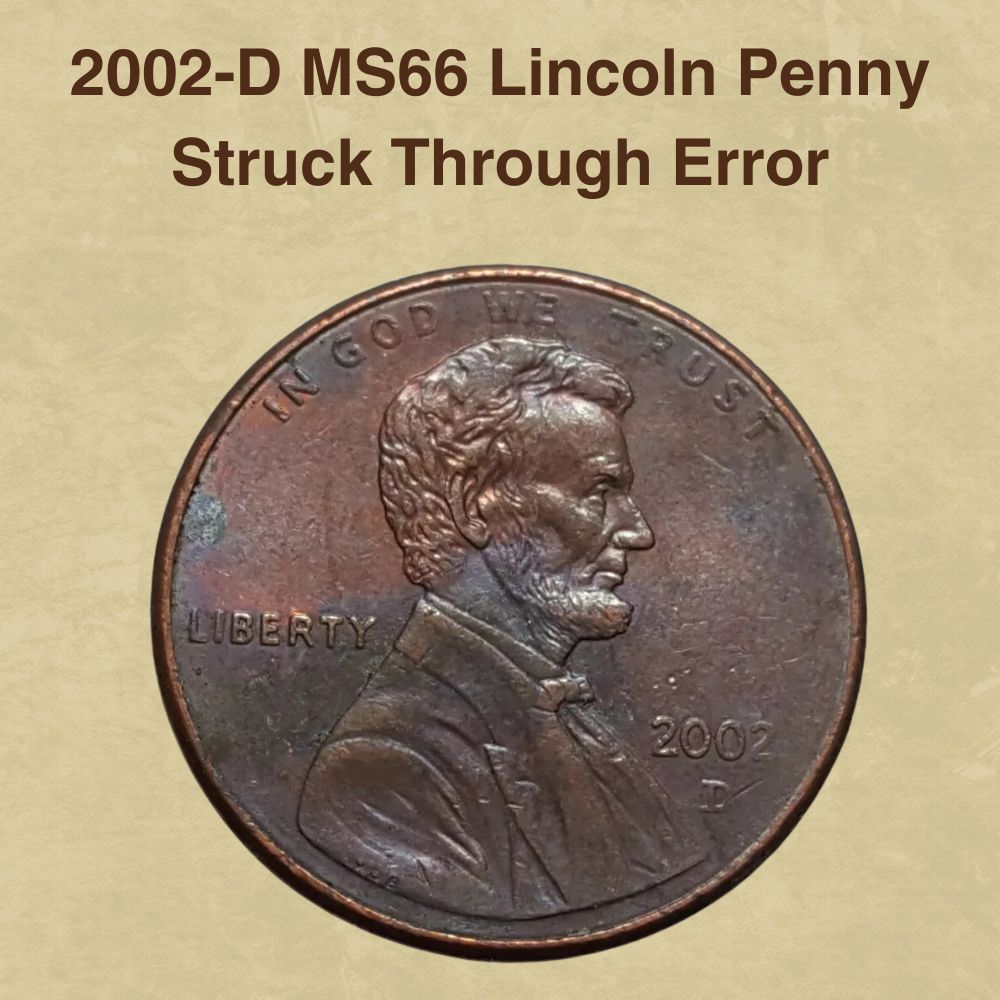
The next one on our list of 2002 penny errors is the struck-through. As the name implies, a struck through is an error in which a stray object is struck between the die and planchet. Examples of stray objects include drops of grease, pieces of cloth, hair strands, dust particles and wood chips among others.
Usually, the foreign material will fall off, only leaving its impression on the coin’s surface. Other times, the object might stick to the planchet’s surface, resulting in a retained struck-through error.
In the case of a grease struck-through, the grease obscures parts of the coin’s design during striking, resulting in a weak or blurry image. When collecting pennies, you might notice that on some coins, key details of Lincoln’s face and parts of the reverse inscriptions appear weak or missing—this is probably due to the presence of grease on the die’s surface.
So, how much can a grease-struck through error fetch? Well, you can expect a premium for such an error. For example, in 2006, a collector paid $775 at a Heritage Auction sale for a 2002-D Lincoln penny graded MS66 with a grease struck-through error.
6. 2002-S MS65 Lincoln Penny Clipped Planchet Error
Another error you might encounter in the 2002 Lincoln pennies series is the clipped planchet. This error occurs when the blanking die improperly punches planchets from the metal sheet, leaving a crescent-shape on the coin’s edge.
There are various types of clipped planchet errors but the most common ones are the straight, curved, and jagged clipped planchet errors. Larger clipped edges are generally more valuable than smaller ones.
Clipped planchet errors are not only dramatic but also rare, making them one of the best additions to your pennies collection. In 2011, Stack’s Bowers sold a 2002-S penny graded MS65 with a straight clipped planchet error for a remarkable $1,150.
7. 2002-P MS68 Lincoln Penny Reverse Side Die Crack
As the name implies, a die crack occurs when fissures develop on the die’s surface due to pressure or normal wear and tear from hours of striking. As the die continues working, the fissures fill with small metal pieces, creating raised lines on the die’s surface.
Eventually, the die will transfer these raised lines onto the surface of one or more planchets, resulting in what appear like cracks on the coin’s surface. Usually, coins with larger die cracks will fetch more than ones with smaller cracks.
In 2018, a collector on eBay paid a whopping $1,200 for a 2002-P penny graded MS68 with a prominent die crack extending from the Lincoln Memorial to the coin’s edge. The crack adds a dramatic flair to the coin’s design, making it an excellent addition to your collection.
8. 2002-P MS67 Lincoln Penny BIE Die Break Error
The next error we’ll look at is the popular BIE die break. This is an error in which a tiny break forms in the die between the letters “B” and “E” in “LIBERTY,” creating the appearance of an extra letter “I.”
This interesting error is believed to happen due to die fatigue during mass coin-production. This is unsurprising given that the Mint strikes billions of Lincoln pennies each year, including in 2002.
Although popular, the BIE die break error is quite rare, making it even more fascinating. Collectors are willing to pay good money for this unique error, for example a buyer at a Stack’s Bowers auction paid an eye-watering $1,570 for a 2002-P Lincoln penny graded MS67 with a BIE die break error.
9. 2002-S MS65 Lincoln Penny Retained Lamination Error
Another memorable error that comes up when collecting 2002 Lincoln pennies is the retained lamination error.
This error occurs when a thin layer of metal partially lifts from the coin’s surface but remains attached, creating a blister-like appearance. This phenomenon rarely happens but when it does, it is usually because of flaws in the metal preparation process.
In 2009, a collector at a GreatCollections auction paid $980 for a 2002-S penny graded MS65. The lamination error on the obverse drastically disrupted Lincoln’s portrait, giving the coin a unique appearance that makes it a neat addition to your pennies collection.
Summary
If you’ve always wanted to boost the value of your Lincoln pennies collection, penny error coins are a great place to start. From die caps, to the rare off-center strikes, die cracks, and doubled dies, these unique errors can sell for hundreds or even thousands of dollars, as our 2002 penny errors list reveals. You can indeed turn your spare change into a real treasure by collecting the right types of error coins. Happy collecting!
